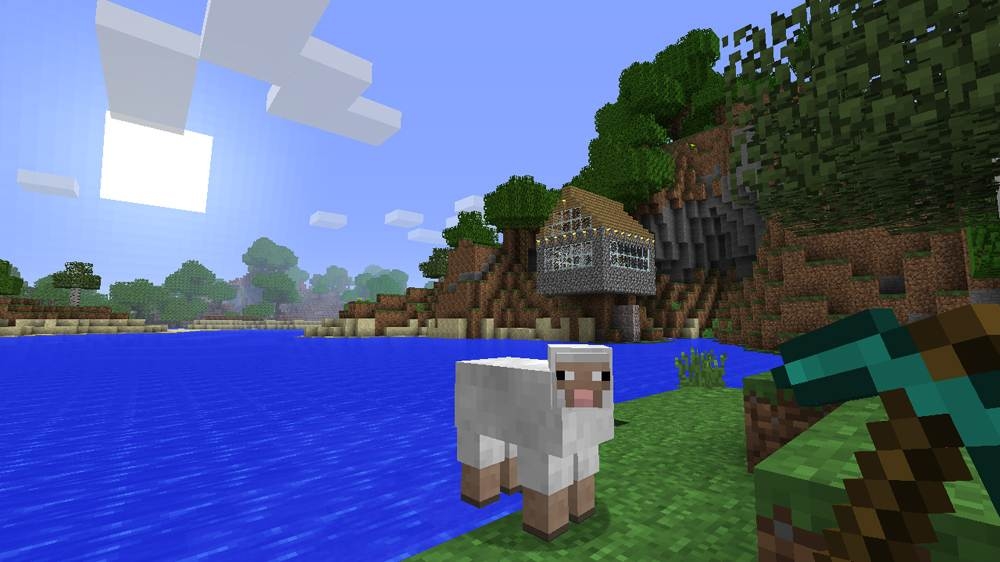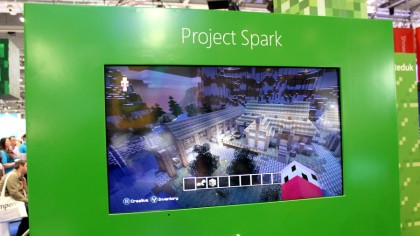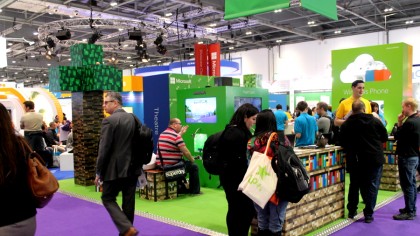How Minecraft is helping kids learn code one block at a time
Digging deep into programming

In turtles, the inability to stop walking in circles can indicate a serious health problem — from partial blindness to irreversible brain damage.
It was habitual behaviour for one particular creature in 1969, but its American owners were far from concerned. That's because the turtle was a robot.
Created by MIT, the Logo Turtle was a three-wheeled machine used to help teach the Logo Programming Language. Children could direct the Turtle, which resembled a moving dome, by inputting computer commands. By drawing shapes of varying complexity, it would help them visualise what was being programmed, with activities ranging from mathematics to language, music and robotics.
- Check out the rest of our PC Gaming Week coverage
The Turtle eventually migrated to the computer screen to help teach Logo using moving graphics.
More than 45 years on, the underlying principle of using a visual aid to help teach children programming lives on. But instead of opting for robotic reptiles, Ray Chambers, Head of IT at Uppingham Community College in Rutland, England, has taken the unconventional route of using the popular open-world sandbox game Minecraft to teach programming to 11-to-16-year-olds.

Mine is yours
Downloaded more than 19 million times since its launch in 2009 — Minecraft, which was bought from its creator by Microsoft for a multi-billion pound sum in 2014 — has no end goal.
The poster child of the sandbox genre, its colourful virtual environments are made up of cube-shaped blocks that let users create anything from houses to castles, statues, towers, fortresses and beyond. But despite its "anything goes" appeal, it wasn't immediately obvious to Chambers that the game would lend itself to teaching programming.
Sign up to the TechRadar Pro newsletter to get all the top news, opinion, features and guidance your business needs to succeed!
"It all began when I was teaching an IT lesson using a Powerpoint slide to talk about the inputs and outputs of logic gates," he told TechRadar at BETT 2015. "I was showing students a NOT gate, explaining that if you have a switch turned on, the output on the other side is off, which confused some of them.
"One of my other students said, 'Sir, you mean like in Minecraft?', and I half-shrugged in agreement. That's when I started looking into it. If it wasn't for my student piping up, I probably wouldn't know anything about it."

Set in stone
Chambers discovered that one of the blocks, called Redstone, can be used to simulate electrical circuits in the real world.
Because Redstone blocks represent live power sources, laying Redstone wiring between them and activating switches can trigger devices — from lighting bulbs to opening doors, setting traps or blowing up TNT (a firm favourite among students, unsurprisingly).
After learning basic commands using worksheets, students are able to progress at their own pace to tackle different parts of the curriculum — such as understanding boolean logic, logic gates and their uses in circuits and programming, and operations on binary numbers. Whatever level they are at, students need time to experiment on the game if they are to progress, explains Chambers.
"Whenever you're teaching a lesson on computing, students need to have tinkering time," he says. "If you restrict it, they say you're taking the fun out of it."

Tinkering time
The amount of tinkering time students get ultimately depends on their enthusiasm for the subject. Such is the level of engagement that many continue their projects after school on their own PCs, tablets and consoles, something that Chambers says is down to personal empowerment.
"If you have to teach ICT using spreadsheets, Word and Powerpoint, the lessons can be disengaging and students sometimes can't be bothered," he says. "By giving them more creativity to program, and saying it doesn't matter how they do something so long as they do it, it gives them more ownership of the task."

In September 2013 it was announced that it would be mandatory for UK schools to teach computing, so it is inevitable that not every student will want to enter a programming-related career in later life. But even though Chambers's ultimate aim with Minecraft is to teach programming, he says that the skills acquired in the process go beyond the mere acquisition of knowledge.
"Programming doesn't just teach students that they have to code because every one says so — it teaches them problem-solving skills that they can use in general life," he says. "If something in Minecraft doesn't work, they have to carry out debugging and check syntax to see why.
"I can give them a hint — such as checking their braces, but they have to use their analysis skills. It's a 21st-century skill that applies to all of their subjects — not just IT."
